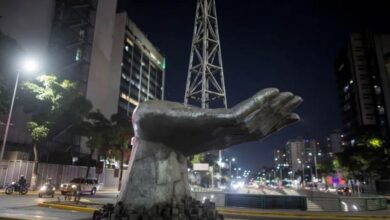“We are making deserts of water”: Fernando Trujillo
The premier of the documentary “A River Below” has set off alarms about the current situation in the Amazon

The branches of the Amazon River twist like snakes over the thickness of the jungle. As the water brings food to the animals and maintains over 35 million people that live around the river, it is also the habitat of the Amazon River dolphin.
This animal, known in the region as boto, or pink river dolphin, is in danger of extinction because of indiscriminate fishing, mining, and deforestation. A River Below, a documentary directed by Mark Grieco – which can be found in cinemas from February 15th to February 18-, reveals the overwhelming reality of the situation.
The film starts with dolphins and then two scientists take over as protagonists following the same objective: to fight against the threats that make the species vulnerable by educating people and making political changes.
From one side, the viewer establishes a relationship with the Brazilian celebrity Richard Rasmussen, a man who goes beyond the limits of conservationism, sacrificing his popularity in order to campaign for a change in his country that prohibits the sale of piracatinga fish, a food source caught using dolphin as bait.
On the other side, there’s the story of Fernando Trujillo, a Colombian biologist, director of the Omacha Fundation and one of the world’s most noted experts on pink dolphins. During the film, Trujillo shows how he gathers data with the objective of making a change in Colombian politics that will avert the crisis the dolphins face and works to avoid the sale of mota fish which contains high levels of mercury.
Latin American Post talked to Fernando Trujillo to know about the risk these dolphins face:
- We know that pink dolphins are a threatened species, what can we do to increase their numbers?
I am member of the International Union for Conservation of Nature. They will classify the species as different and with that, we are planning to change the status of the dolphin from threatened to critical danger because we don’t see, in the next ten years, the possibility of reducing the threat to them.
Those threats will increase. The situation in the Amazon is getting out of our hand. All the southern part of the Amazon in Brazil is destroyed. So, what we need to do is look for economic alternatives, we need to make new laws between governments because the laws for fishing are different in each country although both nations share the same river.
Nowadays, people go out for two or three days and they don´t find enough fish to feed their families; it means that we are making deserts of water and what we want is rivers of life.
- In indigenous mythology, the pink dolphin is a sacred animal, why are indigenous people hunting this species?
Over time, indigenous communities have been changing their relationship with nature. In the early 70’s, some fishermen started to use fishing nets, some dolphins were caught in them and drowned. In 2000, I started to note that the animals had learned how to jump out of the fishing net; they even learned to steal the fish that were caught there.
The situation set off a conflict between fishermen and dolphins; they used to shoot them with their guns until they realized that dolphins could be used as bait. In a way, economic pressure transforms people.
If someone else asks a fisherman to catch mota fish, eventually, he will do it. Fishing is a dying job, so if one day there’s no more fish, these people will do something else. We started fishing bagres, then we took piracatinga fish. What will be next? Are we ready to fish pirañas?
- What is the first step to take?
The good news is that the government in Colombia has now prohibited the sale of mota fish. Now we must create alternatives for boatmen and fishermen and implement plans that allow them to live with dignity.
Now we have to move forward and show this documentary to presidents and senators from Brazil, Colombia, and Perú, in order to make them legislate and take decisions together. Those places are very remote, and if someone kills a dolphin, nobody will know because it’s a huge area with no government presence.
- Mota fish is banned at the market, what species are they going to fish?
There are other species like bagres, pirarucu and cachamas. However, the most important is to fish in a responsible way. For example, in Puerto Nariño we have been working eight years with indigenous communities and the fishing authorities. We’ve made agreements with the community and we’ve reestablished fishing in some lakes.
With this project we empowered the local people to make their own rules, rules that they follow. At the same time, we a have a project called ‘Pepas Para la Vida’ which seeks to recover the trees on the banks of the river. As the flood waters rise, these trees drop their seeds IGNORE INTO the river and they become food for the fish and a vital part of the food chain.
- Which has been the most difficult part of this fight?
I was not aware that I had opened Pandora’s box. I started to work for dolphins, to talk about them, but I found bigger problems, like the presence of mercury in our waters, pollution, deforestation, and economic interests until finally I received death threats. I never imagined that working with dolphins would bring such a problem and now I don´t know if it is better to close the box or leave it open.
Latin American Post | María Alejandra Gómez
Copy edited by Susana Cicchetto





